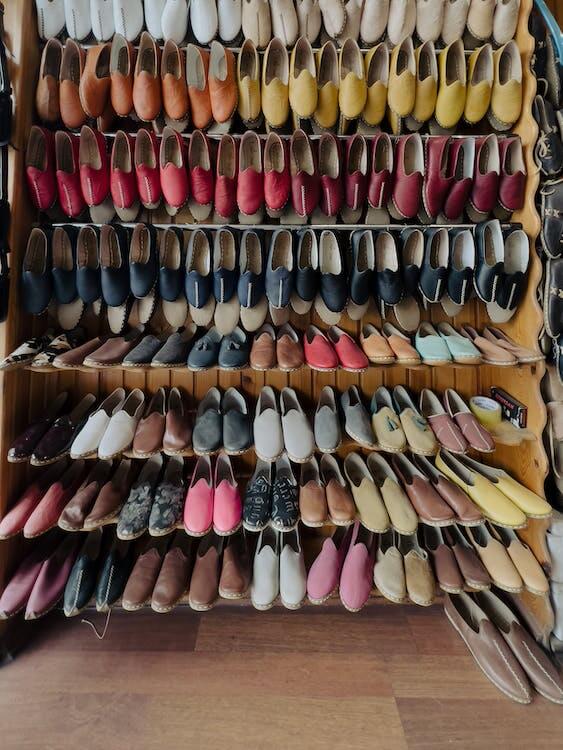Shoe-making is the art and craft of creating footwear. For thousands of years, shoes have been an important part of human history, with styles ranging from sandals and sneakers to boots and loafers. Initially, shoes were uncomplicated and crafted using natural resources such as leather, straw, and animal skins. But shoe-making has evolved into a complex and sophisticated industry, incorporating advanced technologies, innovative designs, and sustainable materials.
Shoes have had many purposes, such as guarding the feet and displaying social status. People in the past usually made shoes by hand to show their riches and influence. During the industrial revolution, shoe production became more automated, leading to larger amounts of shoes made and lower prices. Today, the shoe-making industry remains crucial, with companies of various sizes producing shoes for a global market.
If you’re a novice or a seasoned shoemaker, this comprehensive guide will equip you with the necessary knowledge and tools to succeed in shoe-making. Let’s start and discover the fascinating universe of shoe-making together.
Starting a Shoe-Making Business
Starting a shoe-making business can be a challenging yet rewarding endeavor. To get started, here are some important factors to consider:
Researching the market and competition:
It’s important to study the market and competitors before beginning a shoe-making business. This will help you identify gaps in the market and opportunities for innovation. You can conduct market research through surveys, focus groups, and online tools.
Creating a business plan:
A properly organized business plan is vital for any new business to succeed. Your plan should cover important elements such as your target market, competition, marketing strategy, and financial projections. Making a business plan will assist you in defining your objectives and charting a course toward achievement.
Finding suppliers and materials:
To make high-quality shoes, you must source the best materials from reliable suppliers. You can research suppliers online or attend trade shows to connect with suppliers. Consider the cost, quality, and availability of materials when choosing suppliers.
Setting up a workshop:
Your workshop is where the magic happens. First, you’ll need a workspace with ample lighting, ventilation, and power supply. Next, invest in quality equipment, such as cutting and sewing machines, and last longer to ensure you can create shoes efficiently.
Choosing a business location:
Your location can impact your business success. Consider factors such as foot traffic, accessibility, and rent when choosing a location. Also, consider a location near other businesses in the fashion industry to network and collaborate.
Designing and Creating Shoes: A Step-by-Step Guide
Shoe designing and crafting is an intricate procedure that demands meticulous preparation and concentration. This section will guide you through the key steps in designing and creating shoes, including creating a shoe prototype, choosing materials and tools, cutting, stitching, assembling the shoe, and finishing and quality control.
Creating a Shoe Prototype
The first step in shoe-making is to create a prototype of your design. A prototype allows you to test your design and make any necessary adjustments before moving to the production stage. You can create a prototype using materials like cardboard or foam or a 3D printer to create a more detailed prototype.
Choosing Materials and Tools
Choosing the right materials and tools is crucial for creating high-quality shoes. Look for materials that are long-lasting, comfortable, and visually appealing. Popular materials include leather, suede, and canvas. In addition, invest in high-quality cutting tools, stitching machines, and lasts to ensure your shoes are well-made.
Cutting, Stitching, and Assembling the Shoe
After finalizing your materials and tools, the next step is to begin shoe-making by cutting, stitching, and piecing the components together. This process involves carefully measuring and cutting the materials to the right size and shape, stitching them together using a sewing machine, and assembling the shoe using lasts and other tools.
Finishing and Quality Control
After assembling the shoe, it’s time to finish it with quality control checks. This involves inspecting the shoe for any defects, making any necessary adjustments, and ensuring that the shoe meets your standards for quality and comfort. Once quality control checks are completed, the shoes are placed on a rack to dry and cure. The curing process allows the shoe to set and take on its final shape.
Marketing and Selling Shoes
Creating a Brand Identity
A strong brand identity is crucial for any shoe-making business. Your brand should communicate your unique selling points and values to your target audience. Create a memorable logo and tagline, and use consistent branding across all your marketing materials.
Setting up an Online Presence
Having an online presence is crucial for businesses in the current digital era. Create a website that informs customers about your products and allows them to buy online. You can also use social media platforms to connect with your audience, showcase your shoes, and run targeted advertising campaigns.
Participating in Trade Shows and Events
Joining trade shows and events can broaden your customer base and establish connections with potential customers and retailers. Research relevant trade shows and events in your industry, and prepare eye-catching displays and marketing materials to showcase your shoes.
Selling to Retailers and Customers
Selling to retailers is an effective way to reach a larger audience and increase your sales volume. Research potential retailers and wholesalers who may be interested in carrying your shoes. You can also sell directly to customers through your website or by setting up a physical store.
Finding Resellers
Finding resellers or affiliates can help you increase your reach and drive more sales. Look for influencers, bloggers, and websites in your niche who may be interested in promoting your shoes. Offer them a commission or other incentives to help promote your brand.
Challenges and Opportunities in the Shoe-Making Business
This section will provide insights and strategies to help shoe-making businesses stay competitive in a dynamic industry. This guide will examine the obstacles and possibilities of managing a shoe-making business, such as facing competitors and venturing into new markets and products. It will also discuss the significance of staying current with trends and shifting customer tastes and how innovation is vital in outdoing competitors. The section will provide valuable tips and advice for new and established businesses.
Dealing with Competition
Competition is a common challenge in the shoe-making industry. To distinguish yourself from competitors, you must design exceptional and superior shoes that cater to the demands of your target clients. You can also differentiate yourself by offering exceptional customer service, competitive pricing, and innovative marketing strategies.
Keeping up with Trends and Changing Customer Preferences
In the shoe-making business, trends and customer preferences are constantly changing. Staying current with fashion trends and consumer demands ensures your products stay relevant and popular. Conduct market research, stay informed about industry news, and engage with your target audience to understand their needs and preferences.
Exploring New Markets and Product Lines
Exploring new markets and product lines is important to stay competitive in shoe-making. For example, you can expand your product offerings by creating shoes for different age groups, genders, and styles. Also, consider expanding your business into international markets to reach a wider audience.
Innovating and Staying Ahead of the Competition
Innovation is crucial in maintaining a competitive edge in the shoe-making industry. Embrace new technologies and materials, experiment with new designs and styles, and seek out collaborations with other industry professionals. By staying innovative and creative, you can set your business apart from the competition and attract new customers.
You can now Step Up Your Game to run a Successful Shoe-Making Business.
Starting a shoe-making business is an exciting and rewarding venture. Anyone can design superior shoes that fulfill the requirements and preferences of their intended audience, provided they possess the appropriate skills, tools, and mindset. From researching the market and competition to designing and creating shoes, marketing and selling them, and overcoming challenges and seizing opportunities, the shoe-making business offers a range of experiences and opportunities for entrepreneurs.
If you’re passionate about shoes and want to turn your love for footwear into a profitable business, don’t hesitate to pursue your dream. By demonstrating commitment, diligence, and an openness to personal and professional development, it’s possible to establish a thriving shoe-making enterprise that distinguishes itself from rivals and provides exceptional benefits to its clients.
Remember to stay focused, stay true to your vision and values, and never stop exploring new ideas and opportunities. With perseverance and a commitment to excellence, you can achieve your goals and enjoy a fulfilling and satisfying career in the shoe-making industry.


